April 10, 2016
Martha O'Kennon

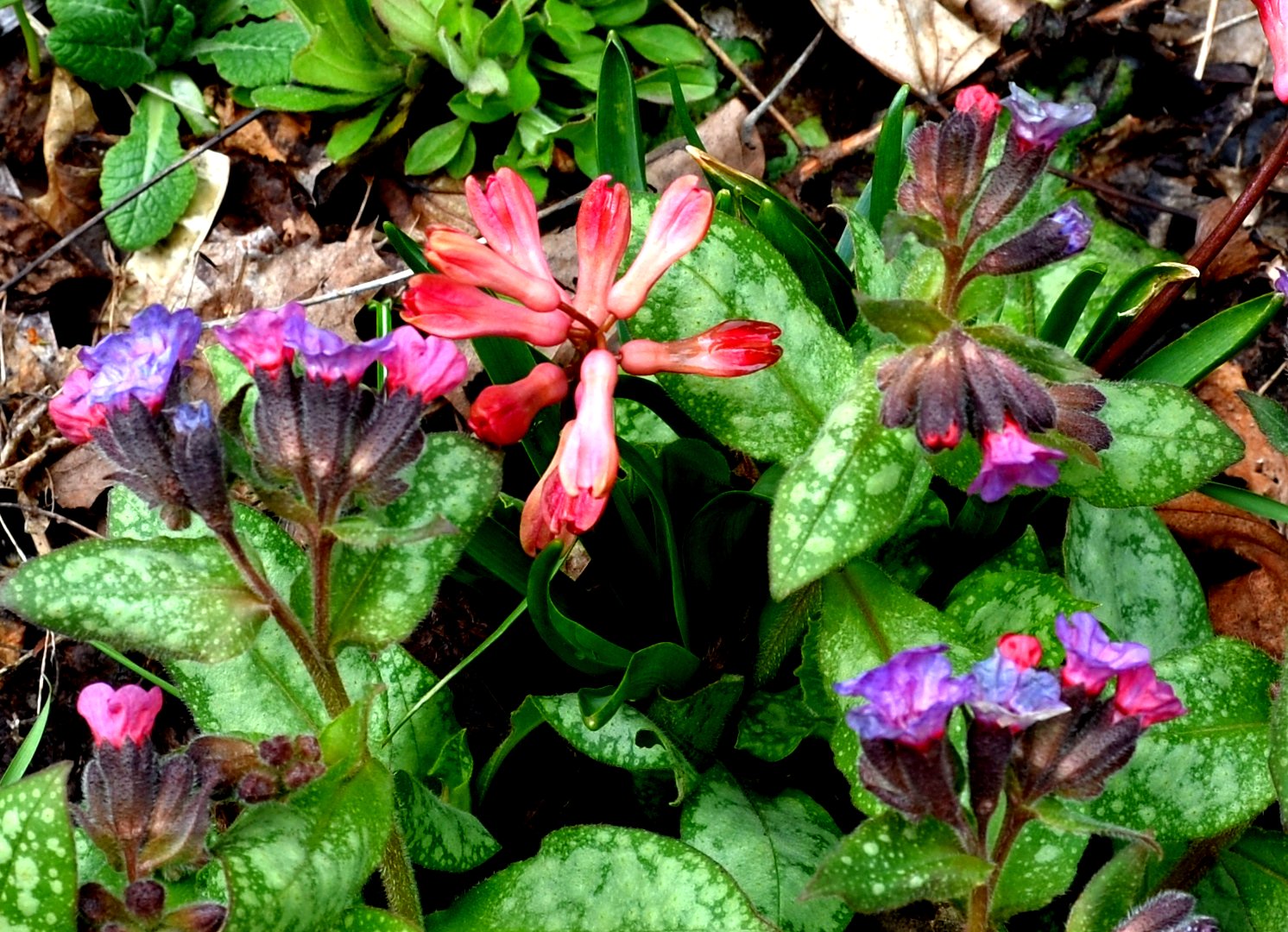
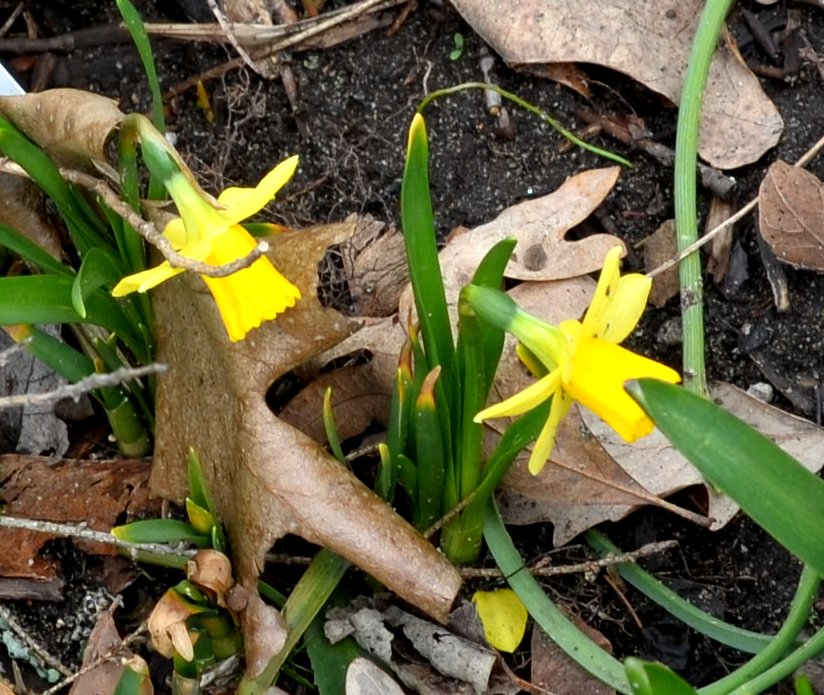
Is it Spring? We ask ourselves each time the weather bounces a bit. It's quite chilly right now, still the flowers are unstoppable. Look how the red primrose has bloomed out since two weeks ago. The pulmonaria is acting as if it owns the place with its bright pink flowers that deepen to blue before they drop off. Several colors of hyacinth are unfolding. And the tiny daffodils are coming out day by day in this yard that isn't sunny enough for the great large daffodils to flourish.
Remember that there is information in the name of the file for each image. You can see it by mousing over the image - look at the lower left of the screen.
I would try clicking on the image. If the little "+" sign appears, it means you can enlarge again. While it is in "+" mode, click on something you want to see more clearly and it will zoom to that section. Then the info is displayed in the address line above. If the image has been cropped
so that clicking on it doesn't result in a larger picture, you can always hit control-plus to increase the size of the image.
We are definitely in a kind of lull. Most days all we see on the shop wall are the little gnats and midges we saw last year. Very rarely a surprise. I really think our big surprise was discovering in January and Febraury those tiny amazing green spiders that I'd never seen last year, and haven't seen since. The last couple of days, though, have been warm in the daytime, and a few more insects and spiders have been showing their faces around here. If I keep delaying this blog, I may contradict myself on this topic several times!
It really has been a slow couple of weeks. At about the change from March to April, this very tiny European Elm Flea Weevil made a brief visit. I wonder what advantage those huge "thighs" confer. Here is the dorsal view as it walks away (slowly) from me. And here's a side view so that you can see the weevil-ish features: the long proboscis with the two side-branches. We also had a rove beetle once in a while.
 3 29 16 2.jpg)
 3 29 16 5a.jpg)
 3 29 16.jpg)
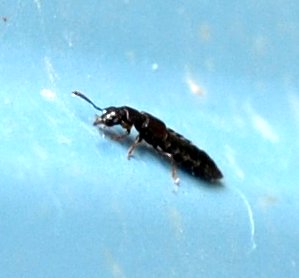
The bugs are back. The other day I found a stink bug in the upstairs bathroom. You may find that very funny, so did I. Then on April 14th, this Western Conifer Seed Bug showed up on the south siding. This isn't too surprising as it was the last bug of the fall, or thereabouts. They must overwinter as adults. Now is the time to start looking for eggs. This Lygus bug may have overwintered as an adult - it's the big brown bug at the right. The little thing that looks like a redskin potato on the left is a young six-spotted orbweaver.
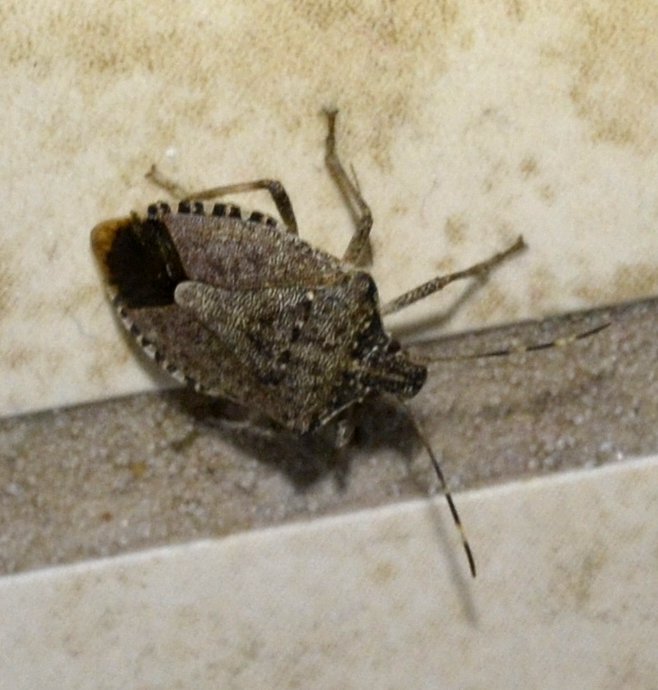 .
.
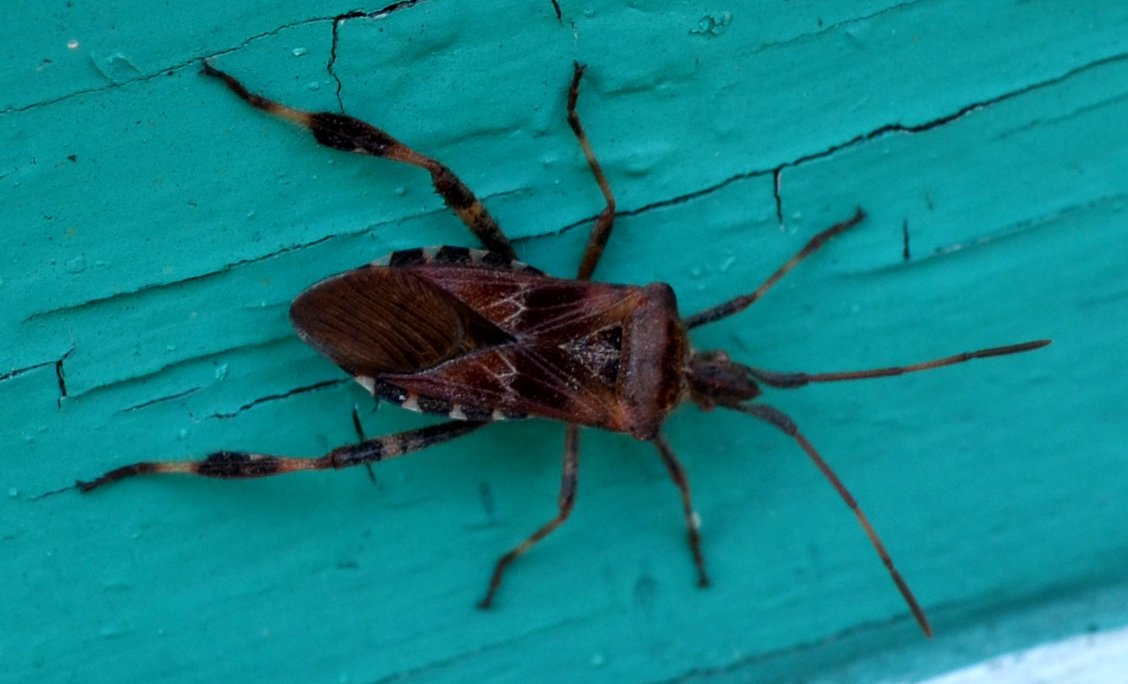

The fishes are getting more active. They fattened up on algae during the long winter. Yesterday I saw eleven of them (one down from last week,when there were eleven survivors.) This lily pad and bud were below the water all winter. But over the course of just a couple of days both pad and bug have stretched themselves to the surface. We will have to wait to see if this bud will develop and open up. I'm thinking YES.
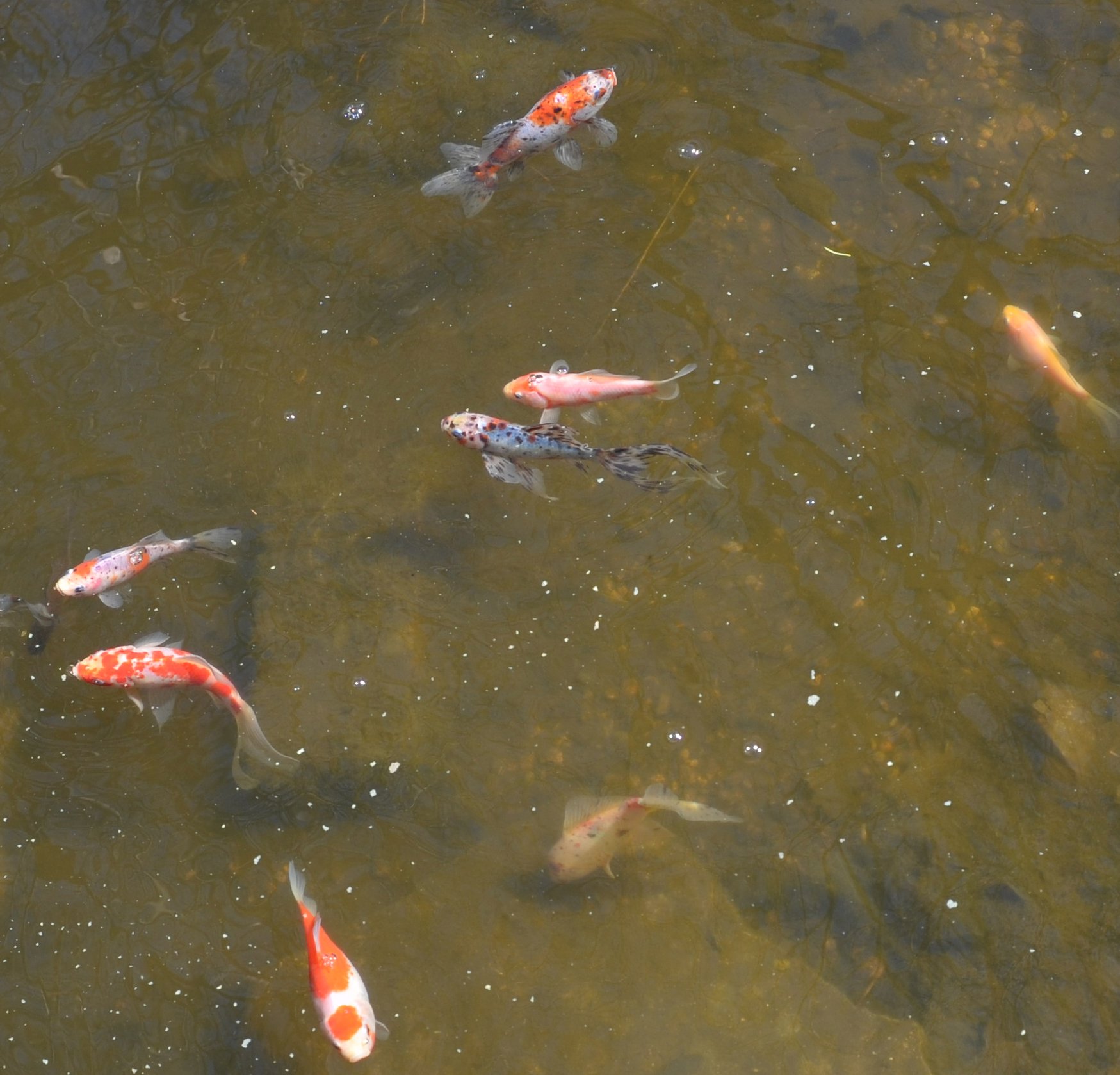
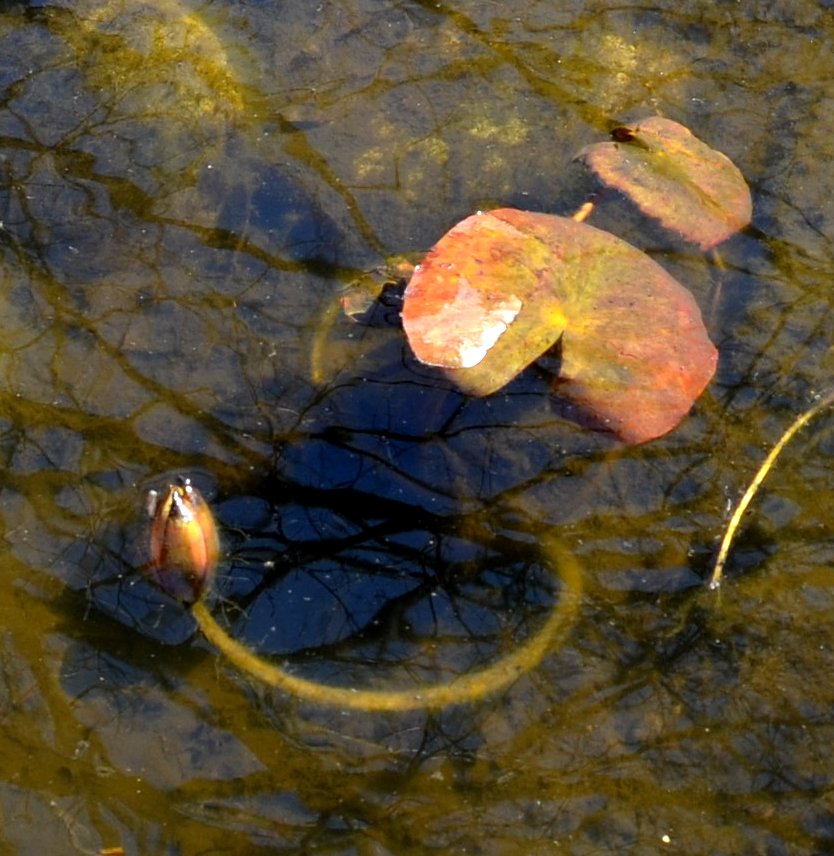
Here is one of the last loopers to show up. (Face-watchers, click to enlarge right on the head. Do you see a fuzzy little face (eyes especially that look as if they were sketched in).I'm not sure where they are pupating (changing from larva to adult), but the adult probably will be either Phigalia titea, the Half-wing, which you saw last time, or something similar. On April 14, this little yellow butterfly came out of the accompanying pupal shell. It wouldn't open its wings, so I brought it indoors and put it into the fridge to get drowsy, then I could see it was plain white (ignore the pink of the picture - I was taking the picture under indoor incandescent light) with a black spot or two, brownish eyes and muffler and a dark grey abdomen. It's the most common butterfly around here - the cabbage white. They're Baaaaack.
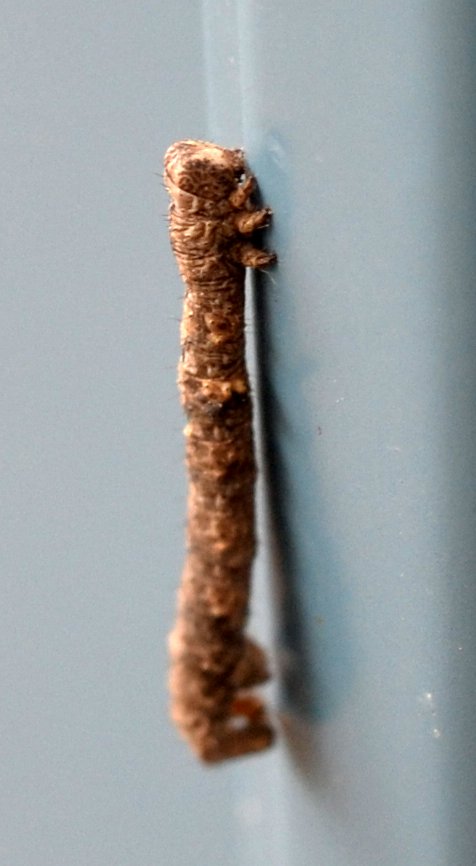
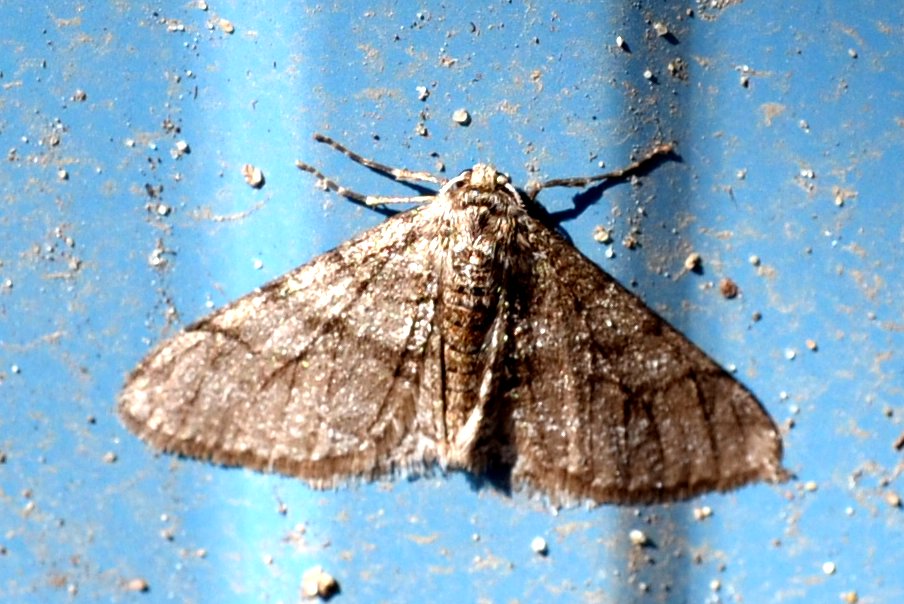
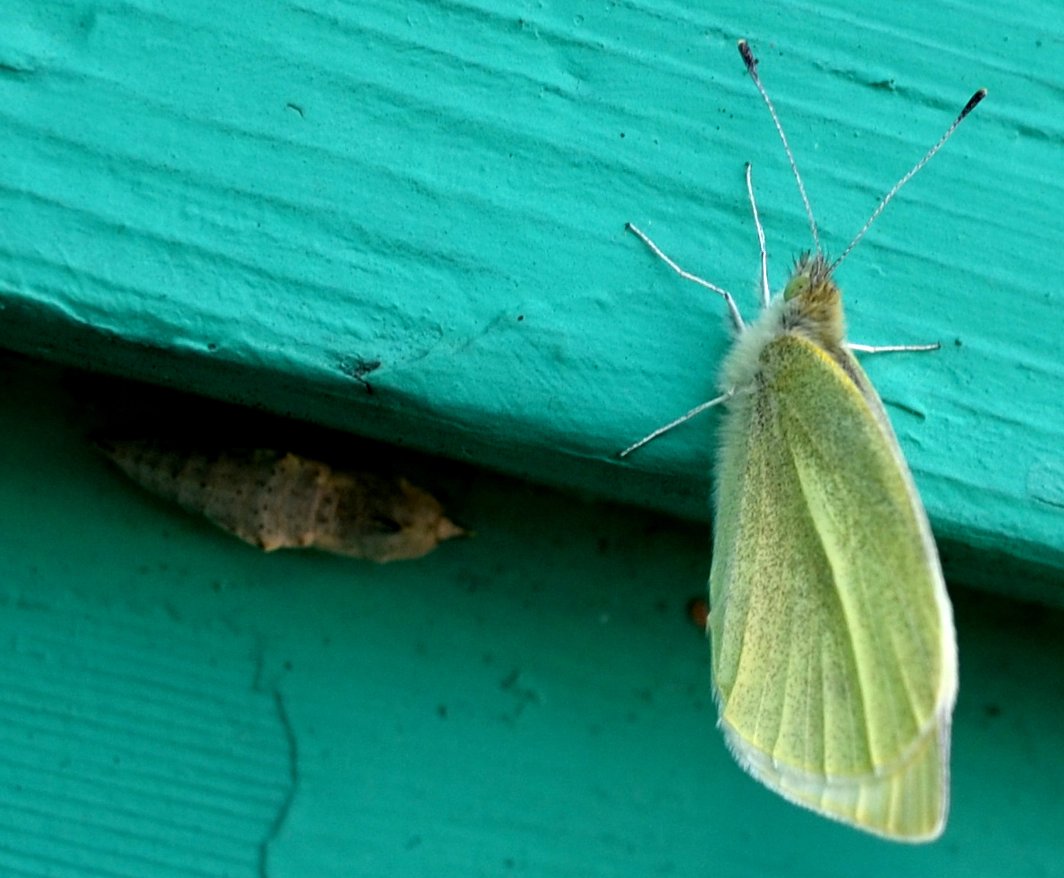
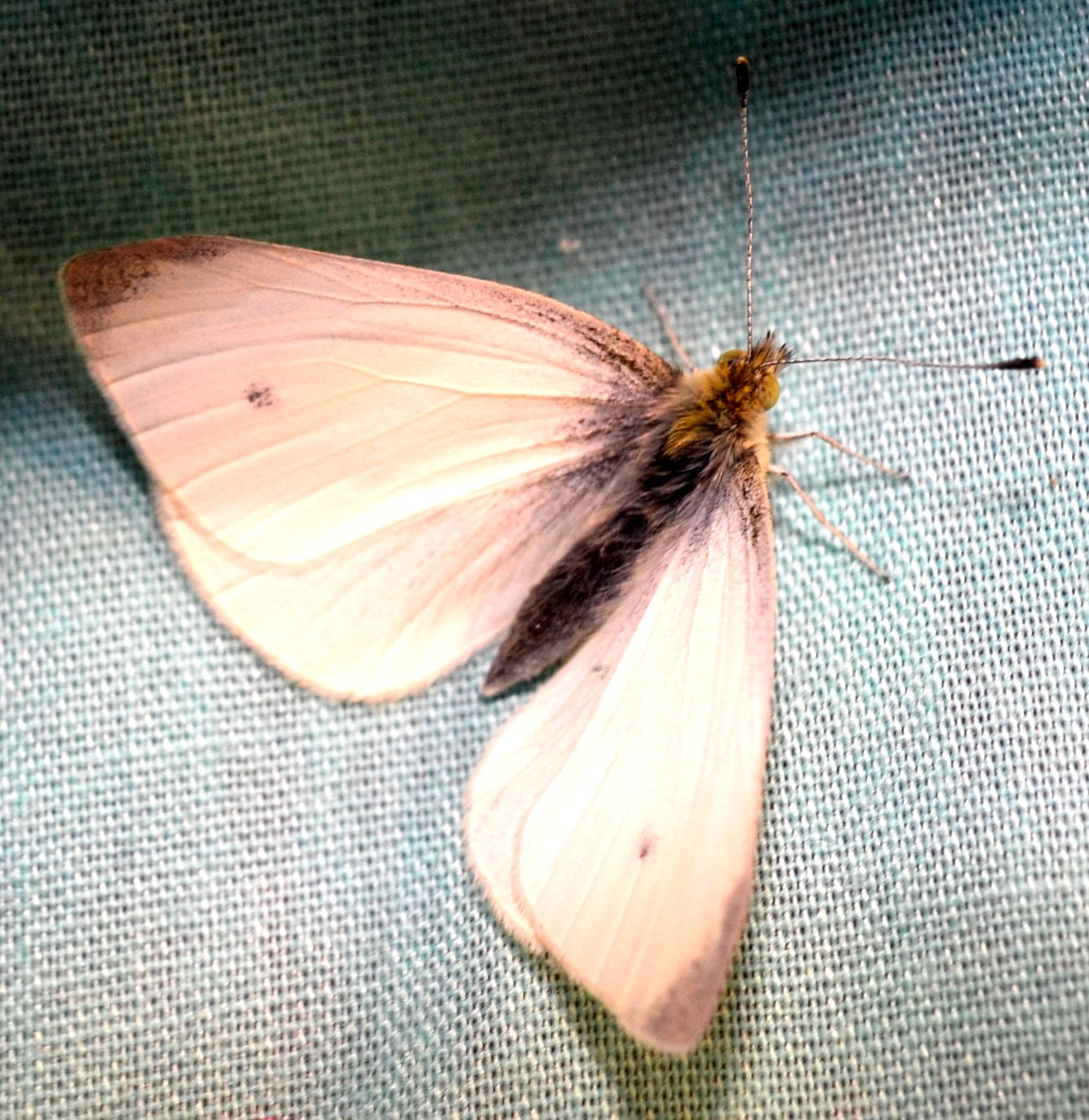
The flies are beginning to diversify. These small flies seem to be somewhat closely related. This first one was on a stone near the pond. Today as I was sitting by the pond, a larger fly which looked a lot like the Helophilus fasciatus hoverfly of last summer was flying near the surface of the pond, dipping her rear into the water as if to lay eggs. I went to Bugguide.com and found that the larvae of that fly do feed on "submerged plant litter". So it could very well have been this fly. Of course, we still have an assortment of midges and galls. Here's one of the larger Chironomus midges. Good thing they don't bite. Of course, this one is a male, so no worries. While photographing this afternoon, though, an almost invisible black dot appeared on my hand and made a big impression on me! Ow! I broke character and squashed him flat. Sorry!
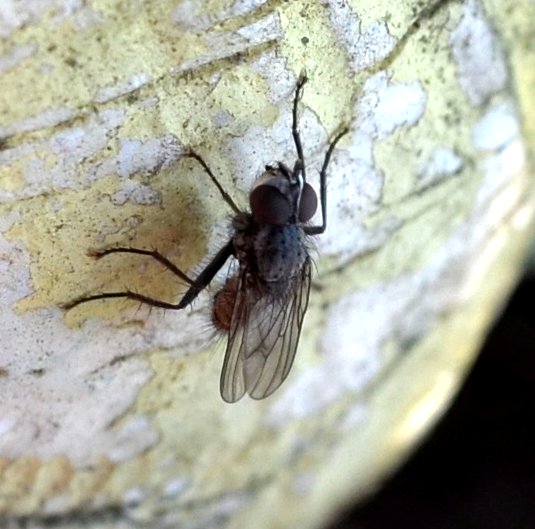
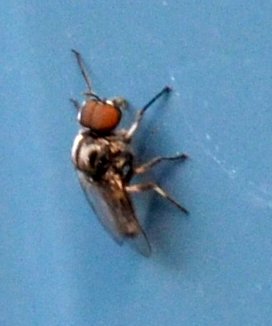
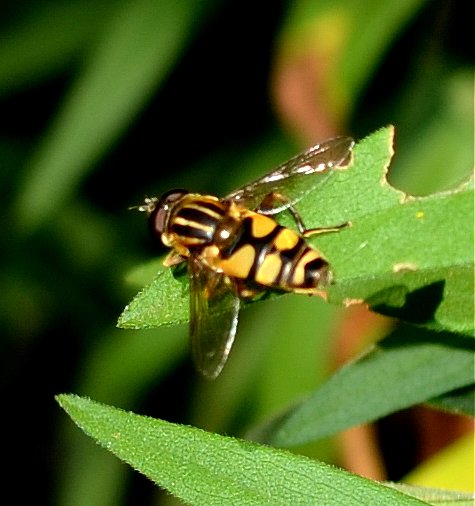
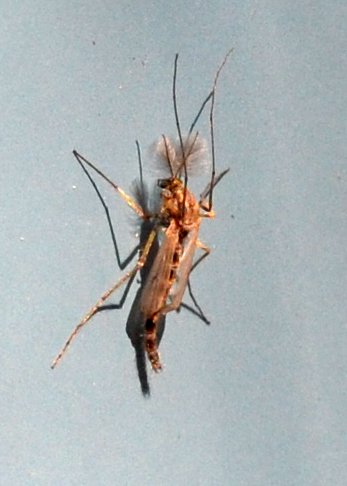
This year the primroses that survived the winter seem to be bursting with buds and have become much fatter plants than before. I've now
begun dividing them and moving them about in the front garden. The red one is still going, and out in the back (east) the pretty mauve one, which was so pretty last year, is blooming in a ho-hum manner! This third picture is of a kind of conical gall made by a wasp on an oak sapling. I don't remember seeing these last summer! Bugguide says the wasp lays her eggs in the leaf, but these were on stems. They also say the growing larvae
irritate the plant, so the plant forms more cells around the wasplets, which is just what they need to eat. Apparently they don't do the plant much harm.
 .
.
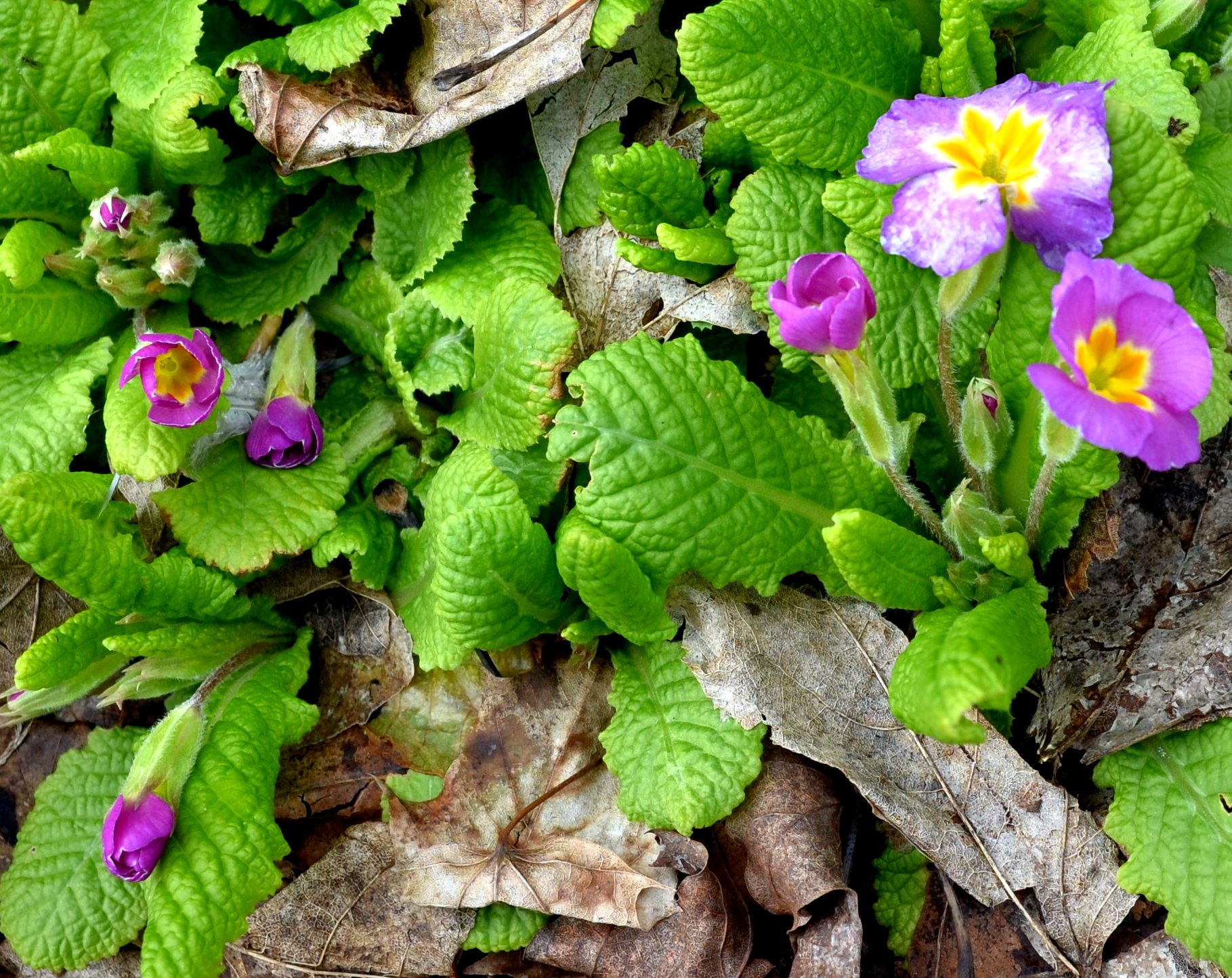

The spiders are also changing the guard. This was the first time we've seen the Pirate spider in a long time. Here it is from the top of the abdomen, then a bit further down - now it looks as if it has one of those crazy faces. You saw the little Six-spotted Orbweaver up there with the Lygus bug. Here it is in that same plant swaying in the breeze and then from the side. Now you can just make out three of the six spots..
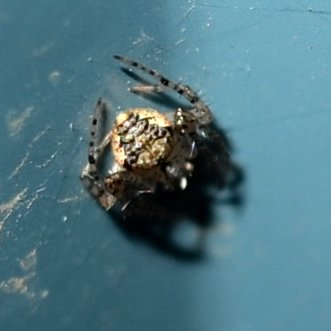
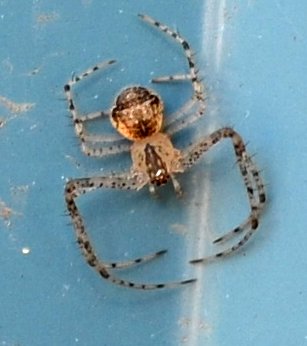
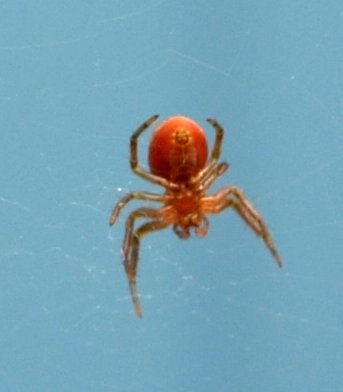
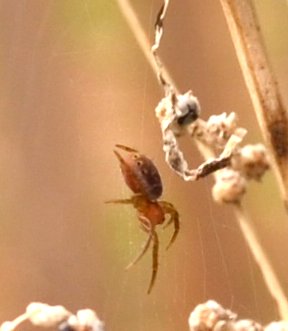
Here's a mystery spider with a rendering of Bugs Bunny with no ears on its head. Then comes a big Crab spider, and one of the little Northern crabs. Here the little crab is looking straight at you with several of its eyes.
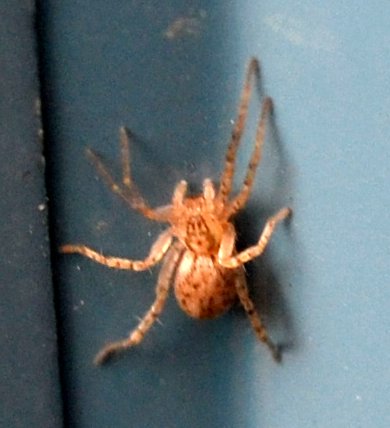
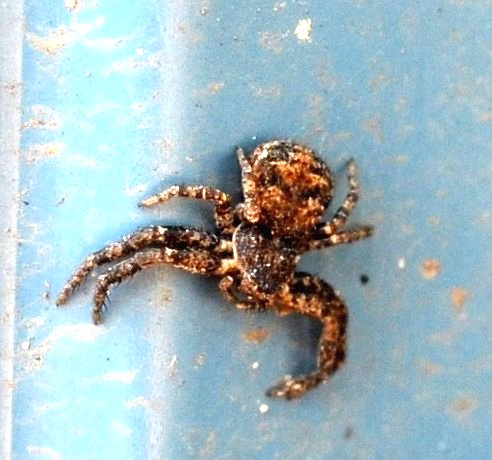
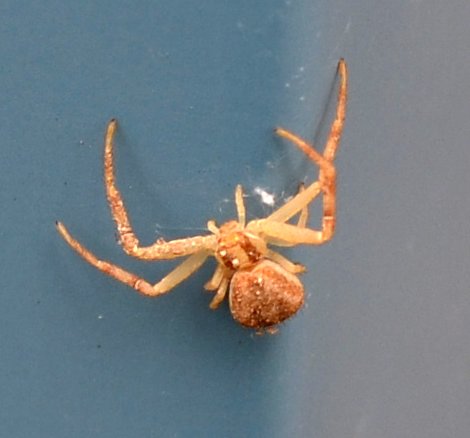
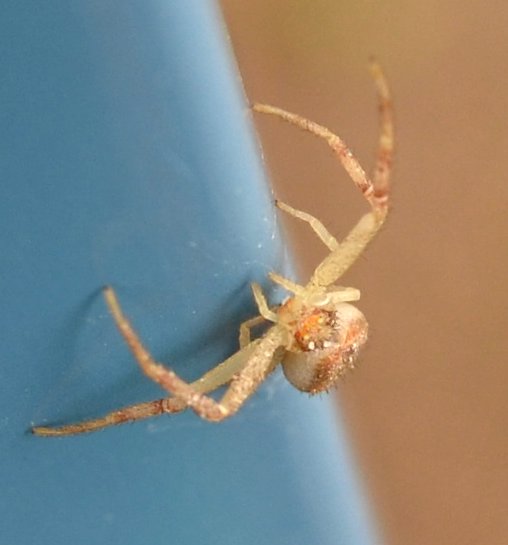
This little orange and black spider is carrying itself like a jumping spider. (The black end is the head end.) This seems to be a jumper we've seen before. Here we have a mystery spider next to one of those little stick cases. I wonder if it has already dispatched whatever lived in there and if she is now guarding babies in that very case - this is all in my imagination, of course. There were a few other little spiders you know well, little common house spiders, and tiny cobweb spiders. But this is where I think I'll end up today.
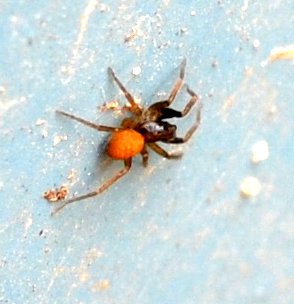
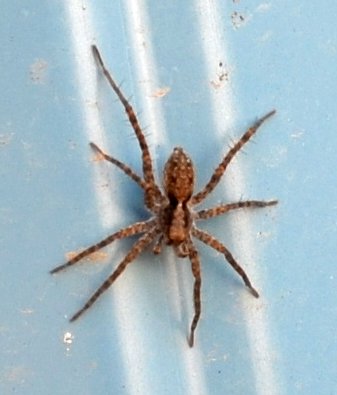
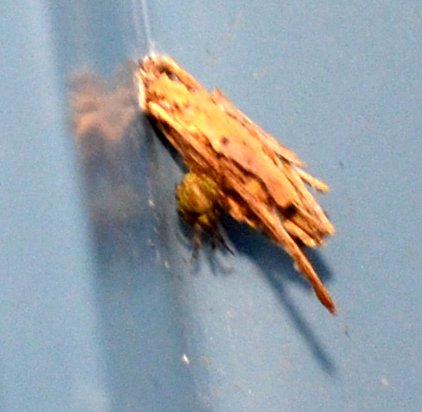
I want to tell you all - I am going to be giving a talk for AAUW with public invited at 7:00 p.m. on May 19 at Bobbitt Auditorium. It's called Nature in the Small for some reason. I'll be giving an introduction to several of the small mini-environments in the yard. For my faraway friends, I'll be posting the pictures and text as a webpage after the talk so people can see it anyway, just without my mellifluous voice. I'm very excited about this. It will be the first time I've talked about the wonderful variety of creatures in the yard and how they interact with the plants and with each other. As I've been preparing this lecture, I've learned so much about the denizens of the back yard. I hope as many of my local friends as possible will come. AAUW always has good food after their programs...
Back to March 27
On to April 24
Back to 2016 menu
Back to main menu
copyright Martha O'Kennon 2016






 3 29 16 2.jpg)
 3 29 16 5a.jpg)
 3 29 16.jpg)

 .
.












 .
.












